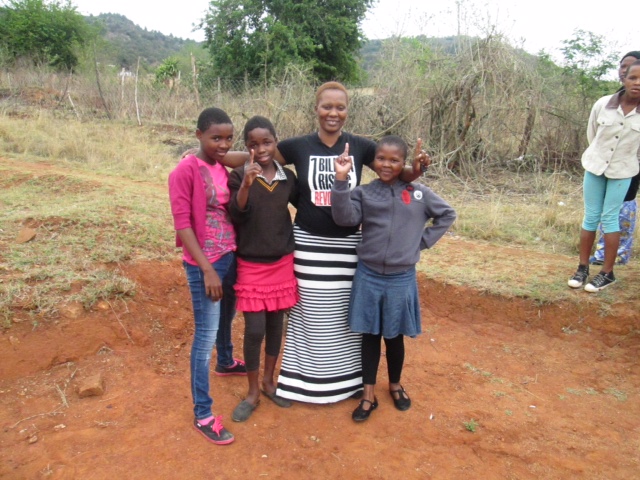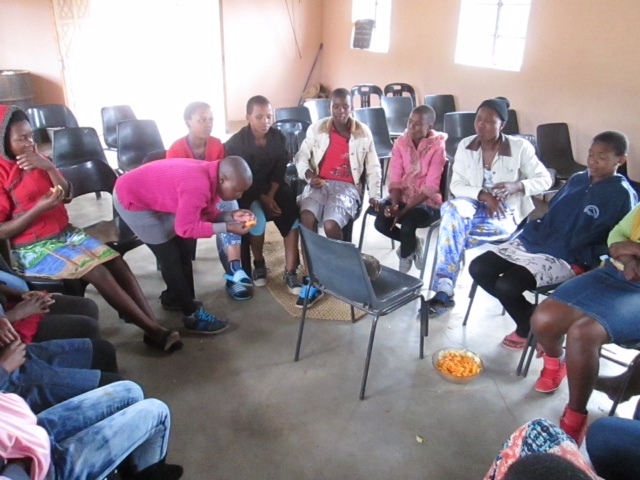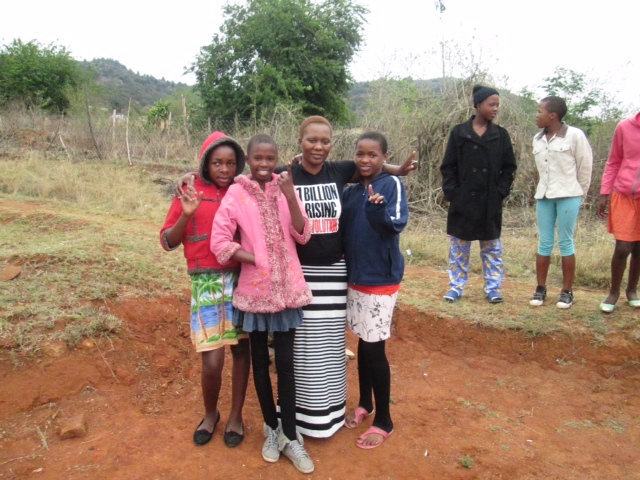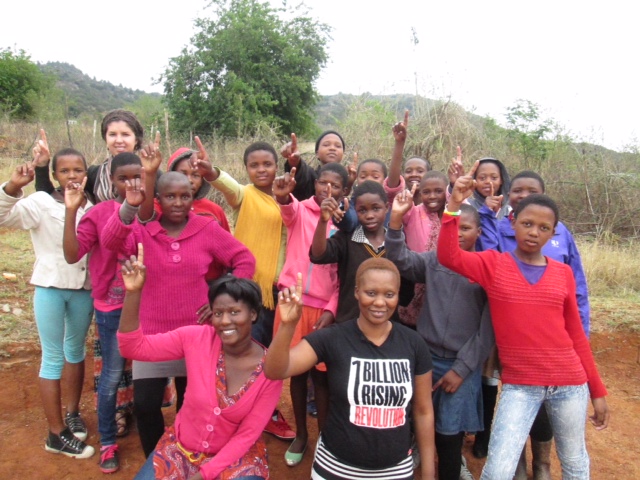
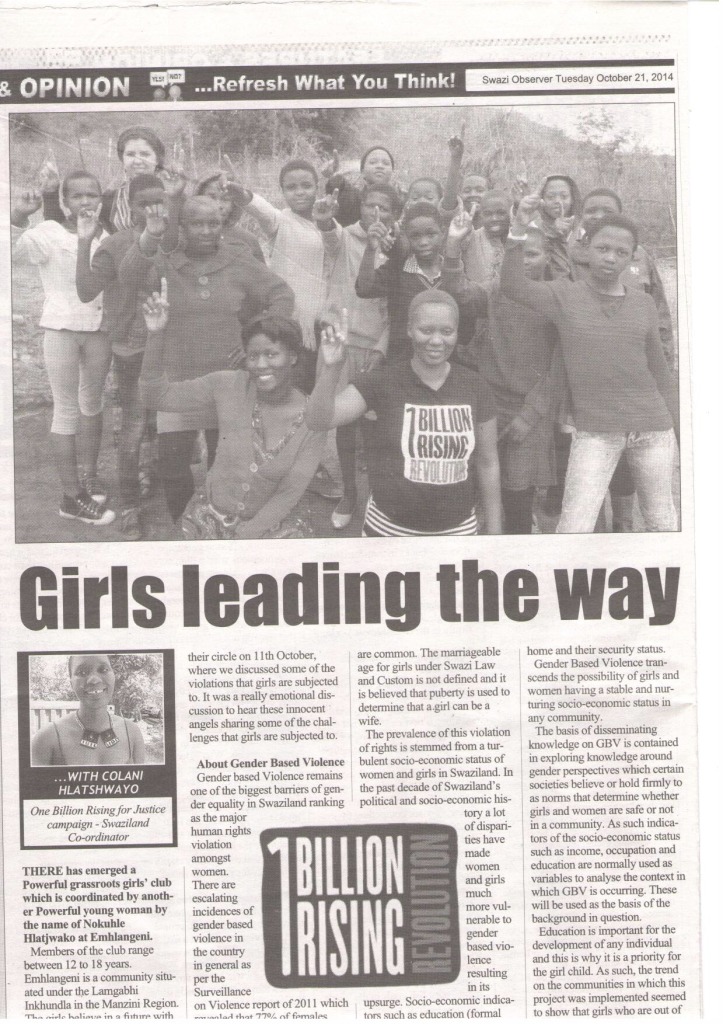
Girls leading the way
There has emerged a Powerful grassroots girls’ club which is coordinated by another Powerful young woman by the name of Nokuhle Hlatjwako at Emhlangeni. Members of the club range between 12 to 18 years. Emhlangeni is a community situated under the Lamgabhi Inkhundla in the Manzini Region. The girls believe in a future with humanity and choice, a future where the youth can grow up and strive with opportunities and with freedom. A future where there is no violence against women girls. In the club girls are sensitised on issues which include Gender based violence, Abstinence, Rights and the importance of education. Most of the members are from surrounding communities (Kaluhleko, Ngogodla and Dvudvusini)
It is so amazing to see such young girls bold enough to say what they want and what they aspire to be. They strongly believe that for them to be better and powerful women they need to be educated. I was invited in their circle on the 11th of October, where we discussed some of the violations that girls are subjected to. It was a really emotional discussion to hear these innocent angels sharing some of the challenges that girls are subjected to.
About Gender Based Violence
Gender based Violence remains one of the biggest barriers of gender equality in Swaziland ranking as the major human rights violation amongst women. There are escalating incidences of gender based violence in the country in general as per the Surveillance on Violence report of 2011 which revealed that 77% of females were victims of abuse and perpetrator were male and were known to the survivors (CSO, 2011).Serial rapists’ occurrences which abduct and later kill women and girls are also seen from time to time. The practice of muti-killing/ ritual murders is also from time to time surfacing especially soon before the year of national elections. During this period women and children disappear and are later own found dead or are never recovered.
Testimonials of young women alleging that they were married under Swazi Customary Law without being told about the intended marriage and without their consent being elicited first are common. The marriageable age for girls under Swazi Law and Custom is not defined and it is believed that puberty is used to determine that a girl can be married as a wife.
The prevalence of this violation of rights is stemmed from a turbulent socio-economic status of women and girls in Swaziland. In the past decade of Swaziland’s political and socio-economic history a lot of disparities have made women and girls much more vulnerable to gender based violence resulting in its upsurge. Socio-economic indicators such as education (formal and informal), role or status in society and levels of income have been the key drivers of Gender Based Violence in the home space as such peace is not being ensured in the home never mind the public space.
Adding on to this analysis, a lot of the violence according to newspaper reports seems to be happening in the home such that it has become difficult to claim security even in the public space when it’s not guaranteed in the home. Furthermore, most of the perpetrators of abuse are known to their victims. This denotes the need to closely look at the security of women and girls in the context of socio-economic factors around their lived realities in the home and their security status.
Gender Based Violence transcends the possibility of girls and women having a stable and nurturing socio-economic status in any community. The basis of disseminating knowledge on GBV is contained in exploring knowledge around gender perspectives which certain societies believe or hold firmly to as norms that determine whether girls and women are safe or not in a community. As such indicators of the socio-economic status such as income, occupation and education are normally used as variables to analyze the context in which GBV is occurring. These will be used as the basis of the background in question.
Education is important for the development of any individual and this is why it is a priority for the girl child. As such the trend on the communities in which this clubs are implemented seemed to show that that girls who are out of school actually suffer more horrendous forms of abuse than those in the school setting. Cases of their abuse largely go unreported because there is an absent support system for the survivor of abuse to lean on taking note of the fact that most perpetrators are close to the victims of abuse. The other reason is that the girl child is also largely confined in the private space which is the home such that it becomes easier to conceal acts of abuse if the victim is not in the public space such as school where other stakeholders to the welfare of that particular individual can also note and take action if they can identify that an individual has been abused.
